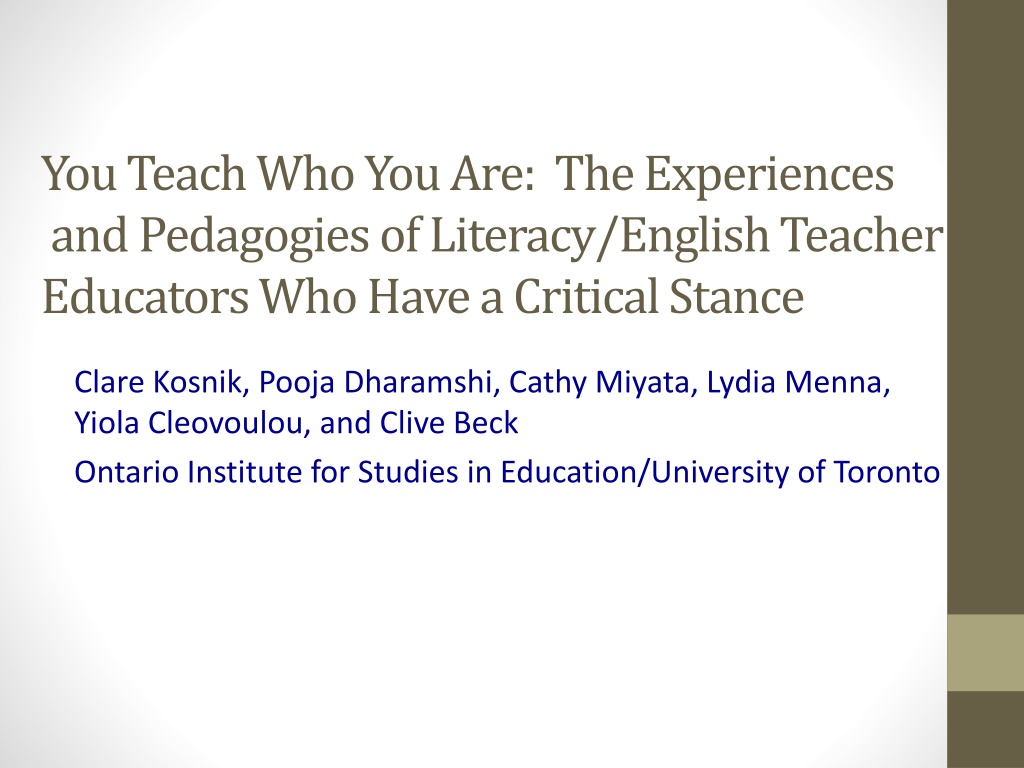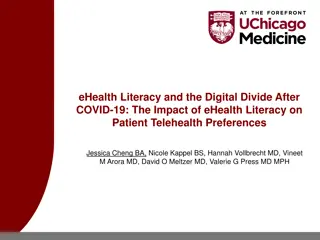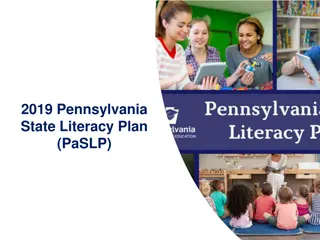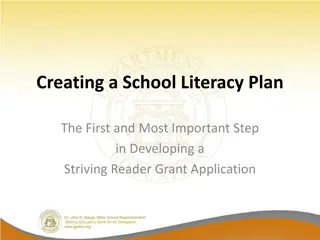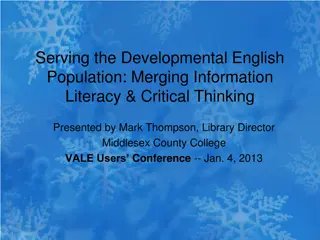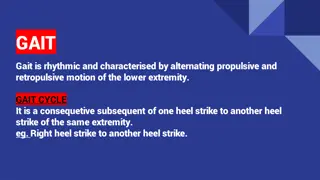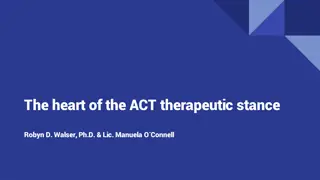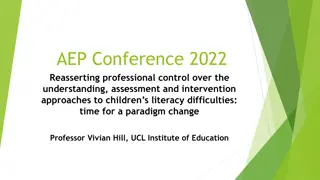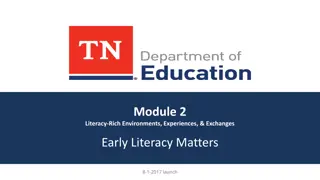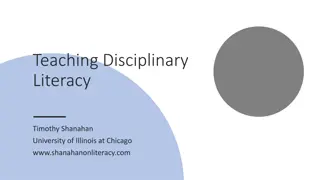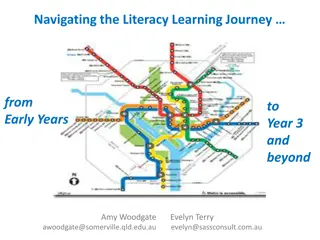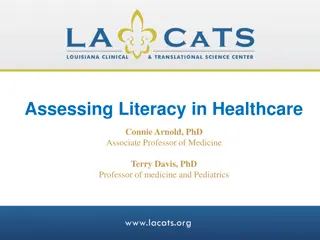Understanding Critical Stance in Literacy Education
Exploring the experiences and pedagogies of literacy/English teacher educators who maintain a critical stance, this study delves into their backgrounds, research activities, and perspectives on government initiatives. Insights from educators in four countries shed light on the relationship between poverty and literacy skills, emphasizing the importance of a critical stance in addressing educational challenges. The focus on various participants' pedagogical practices illustrates dimensions of engagement, reflexivity, and responsibility in fostering authentic learning experiences.
Download Presentation

Please find below an Image/Link to download the presentation.
The content on the website is provided AS IS for your information and personal use only. It may not be sold, licensed, or shared on other websites without obtaining consent from the author. Download presentation by click this link. If you encounter any issues during the download, it is possible that the publisher has removed the file from their server.
E N D
Presentation Transcript
You Teach Who You Are: The Experiences and Pedagogies of Literacy/English Teacher Educators Who Have a Critical Stance Clare Kosnik, Pooja Dharamshi, Cathy Miyata, Lydia Menna, Yiola Cleovoulou, and Clive Beck Ontario Institute for Studies in Education/University of Toronto
Literacy Teacher Educators Goals of the study: to study in depth a group of literacy/English teacher educators, with attention to their backgrounds, knowledge, research activities, identity, view of current government initiatives, pedagogy, and course goals. 28 participants from four countries (Canada, US, UK, and Australia)
Poverty and Literacy Skills In Canada: 17% [who] scored at Level 1 or below have skills that enable them to undertake tasks of limited complexity, such as locating single pieces of information in short texts in the absence of other distracting information. In the US: More than 20% of adults read at or below a fifth-grade level far below the level needed to earn a living wage.
Focus on 8 participants Pedagogical practices exemplify the four dimensions of a critical stance. Research and publications often consider issues such as marginalized students. Theorists who resonated with them are often considered having a critical stance.
Critical Stance Consciously Engaging Entertaining Alternate Ways of Being Being Reflexive Taking Responsibility to Inquire
Critical Stance Consciously Engaging Entertaining Alternate Ways of Being Helping student teachers unlearn Course goals Creating space for difficult discussions Using alternate texts and forms of expression
Critical Stance Being Reflexive Taking Responsibility to Inquire Organic and flexible course structure Teachers as public intellectuals Authentic learning experiences
Early Life Experiences I became very aware of the stratification. I was a very successful student on Saturday [Spanish class] but I was the same student [in elementary class] where I was not recognized. My lack of English was really [seen as] a lack of intelligence I just got a sense of how school structures perceive and label students and give very unequal types of educational opportunities. (Maya)
Turning Points as Adults Pietro work with incarcerated youth have ST visit jails Giovanni learned about his grandfather -- connect with the community Justin school closed by OFSTED - impact of political decisions on teachers
Student Teacher Resistance
Student Teacher Resistance It worked for me so it should work for all children. Dominique: throughout their whole career they have had a path of how to do it well and how to do it right
Student Teacher Resistance There should a standard pedagogy. Dominique: student teachers just wanted her to tell [them] how to do it right, like what's the right way.
Student Teacher Resistance Logistical inconvenience Sara: Some of them want to go to a lecture and want to go to a tutorial and want to have a textbook and want to have all of my knowledge . want it laid out for [them].
What should be done? More support for teacher educators Careful selection of teacher educators Program-wide goal of teaching all learners Immerse student teachers in a program that has a critical approach Closer partnerships with schools Sharing of information (stats) about impact of poverty Use pedagogies that help student learners unlearn and move beyond their own experiences
Stay connected with us: www.literacyteaching.net
